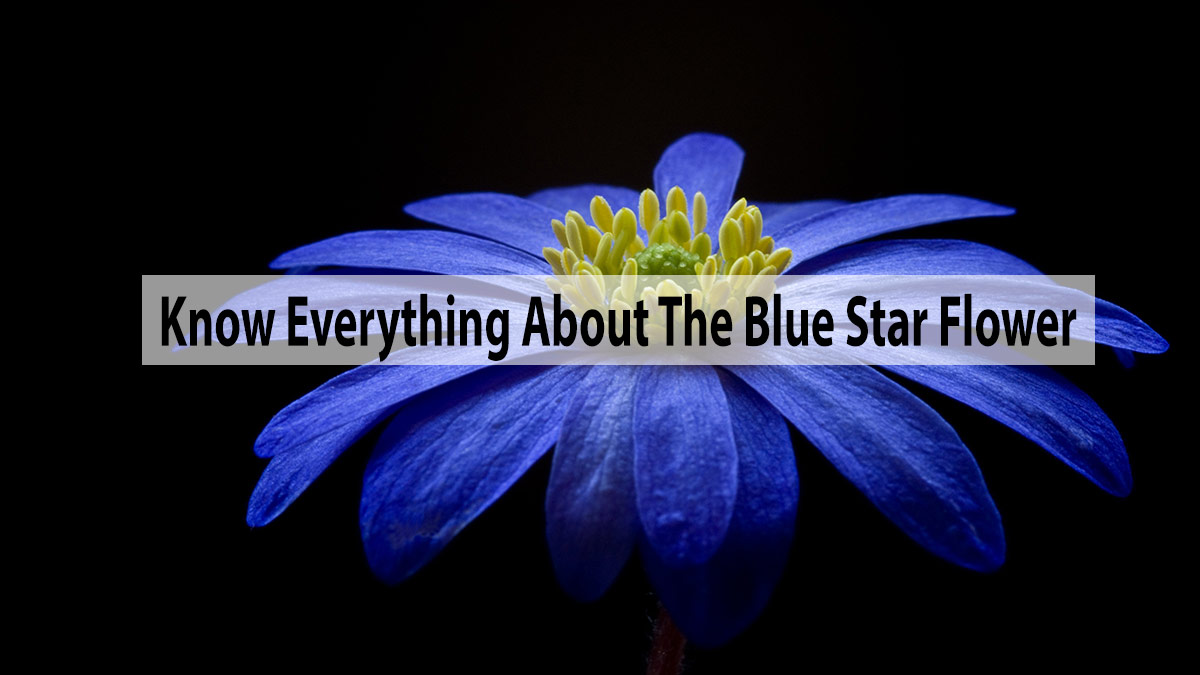Know Everything About The Blue Star Flower

The blue star flower is a beautiful, delicate plant that can add a touch of elegance to any garden. While it is not the easiest plant to grow, it can thrive with a little care and attention. Here is everything you need to know about the blue star flower, from how to plant it to how to care for it by Better Gift Flowers.
The blue star flower is a perennial plant that blooms in the spring and summer.
The blue star flower is a perennial plant that blooms in the spring and summer. This flower can be found in many different colors, but typically it is blue. The bluish color comes from the light reflecting off of the petals. These flowers are used in arrangements that you can order with online flower delivery in Almora. The flowers are also often sweet and can be used as a garnish on salads or desserts.
The flowers are blue with five petals and have yellow stamens in the center.
The Blue Star Flower is a flower that has five petals and yellow stamens in the center. This flower is known for its beautiful blue color and its unique shape. The Blue Star Flower can be found in many different places around the world.
The plant grows to about 24 inches tall and 12 inches wide.
Blue Star Flowers are widely known for their beautiful blue flowers. However, there is a lot you don’t know about these plants. For example, the blue star flower can grow to 24 inches tall and 12 inches wide. This makes them a great addition to your garden or home!
The blue star flower is native to Europe and Asia.
The blue star flower is a wildflower found in Europe and Asia. It has a purple color and is known for its pretty flowers. The blue star flower is easy to get your hands on, so be sure to search for it when you’re in town!
The blue star plant is often planted in gardens as an ornamental plant.
Blue Star Flower is often planted in gardens as an ornamental plant. The flower has a blue color and the petals are wide. The flowers last for a few weeks and are pollinated by bees.
The blue star flower is poisonous to humans and animals if ingested.
The blue star flower is a poisonous plant to humans and animals if ingested. The toxicity of the flower can depend on the dosage, amount, and time of ingestion. If you are not familiar with the blue star flower, it is a small evergreen plant that can be found in moist areas near water. The blue star flower is used to make dye and medicines.
The plant contains a chemical called saponin which can cause vomiting, diarrhea, and seizures.
Saponin, a chemical found in the blue star flower, can cause vomiting, diarrhea, and seizures. While it’s not known exactly how this chemical works, its potential risks are clear. If you are ever unsure about whether or not the blue star flower contains saponin, be sure to ask a friend or family member if they have had any problems with it.
The blue star flower is also known as the bluebell or the bellflower.
The blue star flower is also known as the bluebell or the bellflower. The blue star flower is a wildflower that is found in North America. The bulb of the blue star flower has three lobes and it blooms in midsummer. All of the colors of the stars are represented in this wildflower, including white, yellow, and red.
The plant is in the family Campanulaceae.
The blue star flower belongs to the Campanulaceae family and is known for its unique color and fragrance. This plant can be found in many parts of the world but is most commonly found in warm climates. The blue star flower is a beautiful addition to any garden or herbaceous border.
Also Read: Know All Interesting Things About The Flower Bleeding Heart
The blue star flower was first described by Swedish botanist Carl Linnaeus in 1753.
In 1753, Swedish botanist Carl Linnaeus described the blue star flower as a new species of flower. The blue star flower is a type of umbel that is typically found in cooler climates. The flowers are typically small, with an orange or red center. These flowers can easily be confused with other types of umbels, but they are actually different plants.
Read More At Clicktoway






